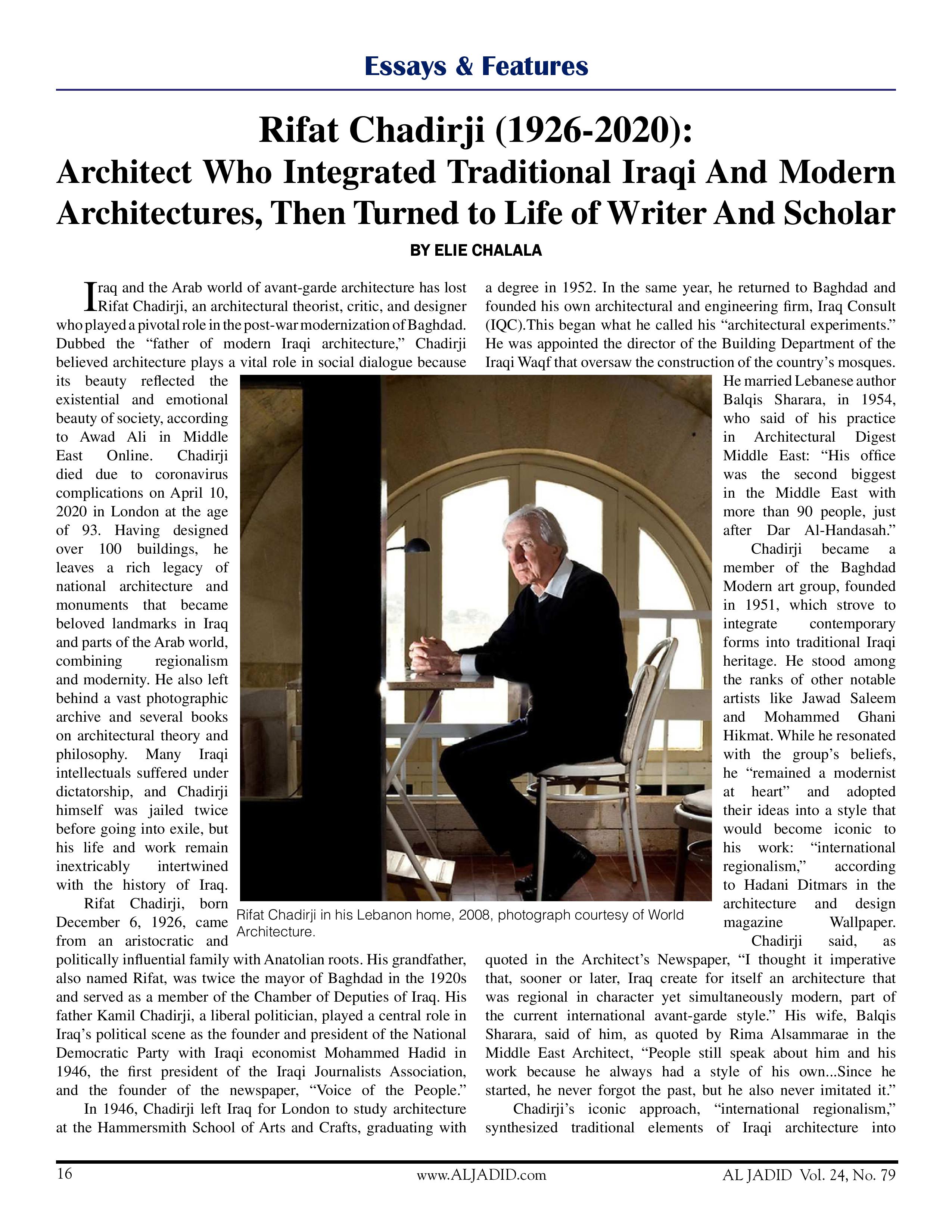Rifat Chadirji (1926-2020): Architect Who Integrated Traditional Iraqi And Modern Architectures, Then Turned to Life of Writer and Scholar
Iraq and the Arab world of avant-garde architecture has lost Rifat Chadirji, an architectural theorist, critic, and designer who played a pivotal role in the post-war modernization of Baghdad. He died due to coronavirus complications on April 10, 2020 in London. He was 93.
Like many Iraqi intellectuals, Chadirji suffered under the monarchy and Baathist dictatorship and was jailed twice before going into exile. His second arrest changed the course of his life, marking the end of his design career and his transition into theory and lecturing.
He stood among the ranks of other notable Iraqi artists like Jawad Saleem and Mohammed Ghani Hikmat. While he resonated with the group’s beliefs, he “remained a modernist at heart” and adopted their ideas into a style that would become central to his work: “international regionalism.”
Chadirji was quoted as saying, “I thought it imperative that, sooner or later, Iraq create for itself an architecture that was regional in character yet simultaneously modern, part of the current international avant-garde style.” His wife, Balqis Sharara, said, “People still speak about him and his work because he always had a style of his own...Since he started, he never forgot the past, but he also never imitated it.”
Chadirji’s approach, “international regionalism,” synthesized traditional elements of Iraqi architecture into a contemporary setting. He often opted for “vernacular fundamentals, incorporating them into a new form,” according to a press report.
Yet, Chadirji dedicated himself to the preservation of Iraq’s culture and architecture. Alongside his father, he photographed much of Baghdad and the larger region of Iraq and Syria from the late 1950s to the early 80s, fearing that regional architecture and monuments would be lost to new development associated with the oil boom.
Throughout his career, Chadirji designed and built scores of notable buildings and monuments across Iraq and various parts of the Arab world. Perhaps best known among them is his “Monument to an Unknown Soldier” in Fardous Square, Baghdad Unfortunately, the monument was destroyed in 1982 and replaced by a statue of Saddam Hussein (which was itself later demolished in 2003). While Chadirji pledged to redesign the monument after Saddam’s fall, he was discouraged by what he saw during his 2009 visit to Iraq. He eventually abandoned the idea.
Chadirji’s social and personal secularism remained with him until the end of his life. He told an interviewer about his stay in prison, “Instead of using up the time to pray and plead with God, as some prisoners did, I spent my time reading and writing.” Chadirji was far from religious. He said, “Since my childhood, I have been revolting against the traditions of society. I do not believe in the presence of metaphysical forces outside the logic of reason.” What he told a Lebanese TV journalist lent further credibility to his views on religion: while he respected all religions, he asked that “no prayers be offered for him after his death, and that his body be cremated.”
This text is excerpted from a long feature by Elie Chalala’s “Rifat Chadirji (1926-2020): Architect Who Integrated Traditional Iraqi And Modern Architectures, Then Turned to Life of Writer and Scholar,” scheduled to appear in the forthcoming issue of Al Jadid, Vol. 24, No. 79, 2020.
Copyright © 2020 by Al Jadid

